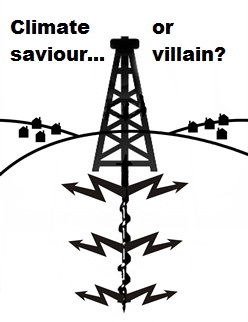Fracking facts: Ten things you need to know about shale gas
Submitted by Claire on Sat, 2013-06-29 09:39 Shale gas is methane (natural gas) which is trapped in impermeable shale rock deep underground. The gas cannot flow through the shale, so simply drilling a well, as you would for conventional natural gas, is not enough. The shale rock must be cracked to free the gas, so large quantities of water, sand, and a range of chemicals are pumped in under high pressure (hydraulic fracturing or 'fracking'). Tens or hundreds as many wells are needed to produce as much gas as in a conventional gas field.
Shale gas is methane (natural gas) which is trapped in impermeable shale rock deep underground. The gas cannot flow through the shale, so simply drilling a well, as you would for conventional natural gas, is not enough. The shale rock must be cracked to free the gas, so large quantities of water, sand, and a range of chemicals are pumped in under high pressure (hydraulic fracturing or 'fracking'). Tens or hundreds as many wells are needed to produce as much gas as in a conventional gas field.
Current government policies, driven in particular by the Chancellor, George Osborne, promote shale gas as a solution to the UK's energy needs. But the facts suggest otherwise:
1. Proven global reserves amount to five times as much fossil fuel as could be burnt between now and 2050 and keep under 2°C of global warming. This basic fact is frustratingly often absent in media discussions about exploiting about yet another source to exploit.
2. Without effective policies to limit carbon emissions there is no reason to think that shale gas in Europe will push out coal – it is just as likely to compete with renewables.
3. There is a big question mark over whether shale gas exploitation is actually any better for the climate than coal burning. It all depends on how much gas leaks out during the process, since methane is a shorter lived but much more powerful greenhouse gas compared to CO2.


